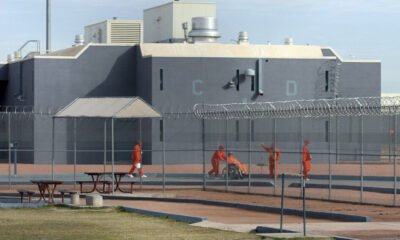Business
Heatwave Devastation: Texas Death Toll Rises After Beryl Leaves Millions Powerless

Almost two weeks after Hurricane Beryl made landfall, heat-related fatalities during the extended power outages have brought the death toll in Texas to at least 23.
SPRING, Texas — As temperatures soared in the Houston-area home shared by Janet Jarrett and her sister, they faced severe conditions due to the power loss from Hurricane Beryl. Janet tried her best to keep her 64-year-old sister, Pamela Jarrett, cool. However, on the fourth day of the blackout, Pamela, dependent on a wheelchair and a feeding tube, struggled to breathe and was later pronounced dead at the hospital due to heat exposure.
“It’s so hard to know that she’s gone right now because this wasn’t supposed to happen to her,” Janet lamented.
The prolonged heatwave and power loss aggravated conditions in Houston, the fourth-largest city in the United States. Beryl, a Category 1 storm, had knocked out electricity to nearly 3 million homes and businesses. Hospitals reported a significant rise in heat-related illnesses.
Power restoration efforts dragged on, leaving residents in discomfort and raising questions about the preparedness of CenterPoint Energy, the region’s electric provider. Nearly two weeks after the storm, power was finally restored to most affected areas.
The Harris County Institute of Forensic Sciences confirmed that half of the storm-related deaths were due to heat. Other fatalities were attributed to incidents such as falling trees and flood drownings.
“She had a big personality,” Janet said, reflecting on her sister’s vibrant past, including owning a vintage shop in Harlem, New York, and working as an artist. Pamela’s death exemplifies the index of lives interrupted by Beryl’s fallout.
Authorities are still working to identify if additional recent deaths are storm-related, with the full death toll still unclear. Lara Anton from the Texas Department of State Health Services indicated that a preliminary count might not be available until the end of July. The department utilizes death certificates to identify storm-related fatalities.
Beyond counting the direct fatalities, experts assess excess deaths to understand the broader impact. This method compares the number of deaths during the storm period to those expected under normal conditions. Dr. Lynn Goldman, dean of the Milken Institute School of Public Health at George Washington University, emphasized this broader analysis to uncover overlooked deaths.
Gregory Wellenius, director at Boston University’s School of Public Health’s Center for Climate and Health, noted that both death certificates and excess death analyses are crucial. While the latter gives a comprehensive number, it doesn’t specify individual stories, which are vital for planning and preventing future tragedies.
“If I just tell you 200 people died, it doesn’t tell you that story of what went wrong for these people,” Wellenius stated. “Learning what happened can help us prepare better for the future.”

















